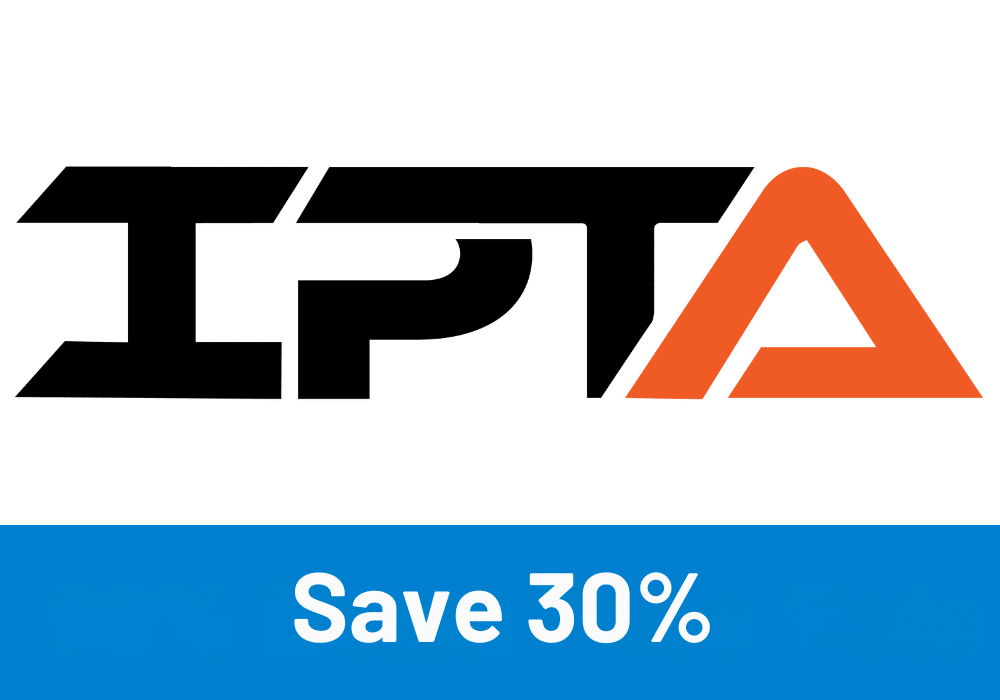
If you have not yet signed up for the NASM CNC certification, receive a big discount here.
Get your copy of the NASM CNC exam cheat sheet. It helps immensely for studying for the exam.
My PTP students report cutting their NASM CNC study time and effort in half with Trainer Academy.
Enjoy the insurance of the Exam Pass Guarantee and Retake Fee Guarantee, plus take advantage of my current discount code PTPJULY for 50% off until July 8th, 2025.
Try it out for free here to see if it’s right for you, or read my detailed review for further insights.
Chapter Goals:
- Explain the functions and the structure of the fat.
- Discuss the absorption and digestion of fats in the body.
- Find the requirements for total daily fats.
- Discuss the method for establishing a diet program’s requirements for fats.
- Discuss the hot topics or myths that relate to fat.
- Communicate with your clients regarding guidelines for fat intake, fallacies, and some facts.
Introduction
Fat is one of the three macronutrients we take in the human diet. This fat is vital for survival, and it has many functions it does in the body. Some of the main functions are providing energy, metabolizing fat-soluble vitamins, and taking in essential fatty acids. Fat is different from protein and carbs because the fat is hydrophobic and, thus, not soluble in water.
Fats provide 9 calories per gram.
Structure of Lipids
Lipids are made up of repeating fatty acid units. Fatty acids are made up of hydrogen, carbons, and oxygen. There are many different kinds of lipids, and each has a vital role in the body.
Simple Lipids
Fatty acids are the building blocks of fats. These are made up of long chains of hydrocarbons. One end has a carboxyl group, which is the thing that makes a fatty acid an acid. These can be saturated or unsaturated fatty acids.
Saturated fatty acids are the fatty acids that have the max amount of hydrogen molecules and have single bonds between the carbons. Food high in saturated fats will be solid at room temperature and often found in animal fat, palm oil, and coconut oil.
Exclusive PTP CPT Offers |
||
|---|---|---|
Most Popular Cert | Best Online NCCA Cert | Best Study Materials |
Gold Standard Cert | A Good Option | Best CPT for you?  |
Unsaturated fats have at least one double bond between the carbon chains. These are going to be liquid at room temperature, they are not stable, and they are prone to damage from oxidation.
Hydrogenation is the process of making hydrogen into vegetable oil to make semi-solid or solid saturated fat.
Oxidative damage is the imbalance that happens in free radicals and antioxidants. Free radicals are things that have molecules with oxygen and an uneven number of electrons, thus making them react more easily with other molecules.
Monounsaturated fats are unsaturated fats that will only have one unsaturated carbon.
Polyunsaturated fatty acids are unsaturated fats containing at least two double bonds between the carbons.
Monounsaturated fats are vital for a healthy diet for your heart. The Mediterranean diet is an example of a diet that focuses on this. This diet is based on the more traditional foods that people ate in Greece and Italy. These foods were high in monounsaturated fats and included olive oil, seeds, and nuts.
Trans fat is an artificial fatty acid that is present when hydrogen has been added to liquid vegetable oil to make them more solid and have a longer and more stable shelf life.
LDLs are Low density lipoproteins. These are known as bad cholesterol. This takes the cholesterol from the liver and to the cells.
HDLs are high density lipoproteins. This is known as our good cholesterol. These cells work to transport cholesterol from the cells to the liver.
The Adipose tissue is our loose connective tissue that is made up of fat cells that we store for potential energy later.
Compound Lipids
The compound lipids we take in are either phospholipids or they are lipoproteins.
Phospholipids comprise two fatty acids, one phosphate group, and a glycerol molecule. The phosphate head is the part that is soluble in water, and the fatty acid tails are insoluble in water. These act to form cell membranes.
Lipoproteins are a combination of fats and proteins that transport cholesterol and other lipids to and away from the tissues using our blood.
Exclusive PTP CPT Offers |
||
|---|---|---|
Most Popular Cert | Best Online NCCA Cert | Best Study Materials |
Gold Standard Cert | A Good Option | Best CPT for you?  |
Hydrophilic is something that loves water and will, thus, dissolve in it.
Function of Lipids
Dietary fats are a required source of essential fatty acids and fat-soluble vitamins.
Functions of Dietary Fats
Fats as Major Energy Source
Dietary fat provides 9 calories per gram, which is over two times the amount that protein and carbs give at 4 calories per gram. The majority of our excess intake of fats is to be stored as triglycerides in the body. When carbs are not available, fat will be used during physical activity.
Fats are a Source of Essential Fatty Acids
Omega-3 and Omega-6 fats are necessary for us to get into the body. We get these through walnuts, flaxseeds, flaxseed oil, and chia seeds. These two fatty acids provide many benefits for our bodies.
Fats Metabolize Fat-soluble Vitamins
These vitamins that can only really be taken in with fats are the vitamins A, D, E, and K.
Dietary Fatty Acid Recommendations
Dietary Reference Intakes are the recommended amount to intake of the many nutrients determined by the food and nutrition board. This includes the RDA and AMDR.
Adequate Intake is the recommended daily average that is based on the healthy population.
The function of Fat Within the Body
Cell Membrane Structure and Function
A cell membrane encircles cells. This membrane is responsible for protecting the inside of the cell and also for selective permeability. The main component of the membrane is actually the phospholipids. These are arranged in a bilayer to keep water in and water out of the cell.
Insulation and Temperature Regulation
The thin layer of fat under our skin is used for insulating heat and the other fat in our body is used for protecting our internal organs and may act as a cushion of sorts.
Digestion and Absorption
Most dietary fats are eaten and then stored as triglycerides. These fats must be broken down into component parts by digestion, transported with the blood, and then delivered to the needy cells.
The mouth and the stomach
This is always the first step for any macronutrient. We must take the nutrient in through the mouth, chew, and add some phospholipids to function as emulsifiers. The lingual enzyme lipase will break down the triglycerides, thus separating the fat from the water soluble parts in food. Swallowing the fat moves it to the stomach, and the gastric acids break down the fats. The stomach contracts and churns, thus spreading the fats before entering the small intestine.
Small Intestine
Bile acts as an emulsifier for the fats and is released here when the fats enter. Micelles are formed from the bile salts surrounding the monoglycerides. The fats then move to transport and storage in the body.
Transport and Storage
Transport of Lipids
When the monoglycerides, the fatty acids, and the fat-soluble vitamins reach the small intestine, they essentially reassemble into triglycerides. These will then enter the lymphatic system and move to a large vein that drops to the heart.
Liver
LDLs and HDLs are going to come into play here. These two acts to deliver and bring back the cholesterol in the body to and from cells.
Fat Metabolism and Storage
The chylomicrons and the VLDLs deliver the triglycerides to the cells, which are broken down, and the cell uses glycerol. Fatty acids are combined with glycerol to form a triglyceride to store in the body. Triglycerides go through beta-oxidation in the cells and the byproducts are free fatty acids and glycerol. In muscle cells, the free fatty acids may be stored or made into acetyl-coA. Acetyl-coA is used in chemical reactions in protein, carbs, and lipid metabolism.
Dietary Fat Recommendation and Programming
Dietary Fat and Saturated Fat Recommendation
Many organizations have made recommendations for dietary and saturated fat.
Translating Recommendations into Food Choices
Dietary Essential Fatty Acid Recommendations
The AI for omega-3 is around 2.6 grams for males and 1.1 grams for females.
The AI for Omega-6 is 17 grams for males and then 12 grams for women.
Programming
Dietary fat is an essential part of our diet, and we must program the appropriate amount for the plan we wish to follow.

 Have a question?
Have a question? 



Tyler Read
PTPioneer Editorial Integrity
All content published on PTPioneer is checked and reviewed extensively by our staff of experienced personal trainers, nutrition coaches, and other Fitness Experts. This is to make sure that the content you are reading is fact-checked for accuracy, contains up-to-date information, and is relevant. We only add trustworthy citations that you can find at the bottom of each article. You can read more about our editorial integrity here.